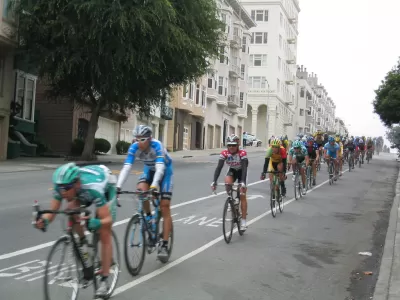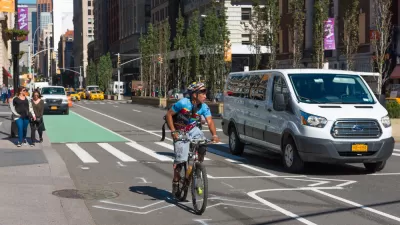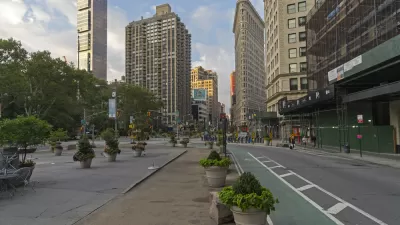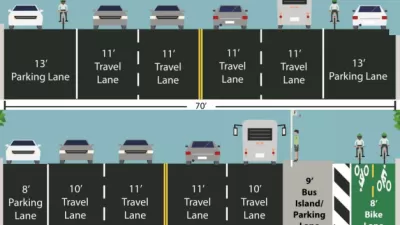Urban bike infrastructure is plagued by three related problems: design, politics, and security.

Slate writer Henry Grabar blasts cities for bike networks that leave cyclists unsafe and uninspired. Drawing on his experiences as a bicycle commuter in New York, he illustrates common "design flaw[s]" that are "born of politics but compounded by disinterested policing."
On the design front, Grabar describes bike lanes that are poorly protected from traffic and paths that end abruptly, creating gaps in the system: "The network is only as strong as its weak points, which can be very weak."
He attributes those weak points to the fact that power over New York’s bike lanes goes to community boards—resulting in a patchwork governance process that de-prioritizes holistic planning:
Transportation planning is the quintessential issue that should not be left to local determination. But bike lanes, for some reason, are subject to the whims of neighborhoods.
Nor, he suggests, can New Yorkers expect action from the police on cars that park or drive in unprotected bike lanes, forcing cyclists to swerve into traffic or ride on the sidewalk.
"If the NYPD can’t keep the lanes clear, there’s no point in having them," he writes.
FULL STORY: Why Bicycling Infrastructure Fails Bicyclists

Maui's Vacation Rental Debate Turns Ugly
Verbal attacks, misinformation campaigns and fistfights plague a high-stakes debate to convert thousands of vacation rentals into long-term housing.

Planetizen Federal Action Tracker
A weekly monitor of how Trump’s orders and actions are impacting planners and planning in America.

In Urban Planning, AI Prompting Could be the New Design Thinking
Creativity has long been key to great urban design. What if we see AI as our new creative partner?

King County Supportive Housing Program Offers Hope for Unhoused Residents
The county is taking a ‘Housing First’ approach that prioritizes getting people into housing, then offering wraparound supportive services.

Researchers Use AI to Get Clearer Picture of US Housing
Analysts are using artificial intelligence to supercharge their research by allowing them to comb through data faster. Though these AI tools can be error prone, they save time and housing researchers are optimistic about the future.

Making Shared Micromobility More Inclusive
Cities and shared mobility system operators can do more to include people with disabilities in planning and operations, per a new report.
Urban Design for Planners 1: Software Tools
This six-course series explores essential urban design concepts using open source software and equips planners with the tools they need to participate fully in the urban design process.
Planning for Universal Design
Learn the tools for implementing Universal Design in planning regulations.
planning NEXT
Appalachian Highlands Housing Partners
Mpact (founded as Rail~Volution)
City of Camden Redevelopment Agency
City of Astoria
City of Portland
City of Laramie





























